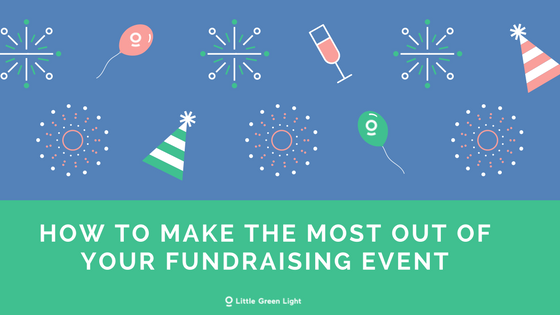
Many nonprofit organizations rely on events to raise funds as well as awareness about their mission. Successful events are the ones that are part of a wider fundraising plan, and in order to get the most from your event it’s vital that you have a strategy for post-event communications. We’ve put together a simple post-event communication plan that’s easy to implement and targets four key donor segments. We know you’re busy managing all the details of planning your event, but you can save yourself some time and stress by following this plan. Here’s what you need to do:
Before the event:
- Track registrations and RSVPs in a manner that makes post-event communications simple to implement. If you store this data in a donor management system like Little Green Light, you can easily create a mailing to your attendees, as well as to those who were invited but couldn’t attend.
- Plan ahead to have a few event photos to use in your post-event communications. You may have a dedicated photographer who will take photos at the event, and that’s great. It often takes a few days or more to receive the photographer’s photos, though, so instead of relying on those pictures for this plan, assign the task to yourself, a colleague, or a volunteer before the event. Let the person know what you’re looking for, such as crowd shots that show people enjoying themselves at your event. Avoid photos of people making speeches—boring! Whoever takes the photos should send them to you as soon as the event is over.
- Choose, in addition, a photo that shows how the money raised by the event will be used. If you work for an animal shelter, this could be a photo of a cat in your care. If you work for a land trust, it could be a picture showing a view from conservation land. You can use a photo that you already have, or you can take a picture specifically to be used in your post-event follow-up.
At the event:
- Make sure you have a registration list and some key staff or volunteers tasked with checking people in. After the event, it’s important that you know who attended versus who RSVP’d yes but didn’t show up, etc.
- Remember to take those photos!
Post-event:
Now it’s time to put together your post-event communications. The goal of these communications is to:
- Share the results of the event, such as how much money was raised and what that funding will make possible
- Let attendees know their presence was noted and appreciated, and let non-attendees know they were missed
Note: No matter how carefully you managed the registration process, and regardless of how organized your check-in table was, there are likely some people who registered for your event but you’re not sure if they attended or not. Don’t worry—we recommend that you create four segments for your post-event communications, and one of those segments is specifically for that category of people!
All of your post-event communications need to include:
- Results (such as how much money was raised and what that funding will make possible)
- Photos
- An expression of appreciation
For each of the four segments, tweak the communications as follows:
- Attendees: Let them know that their attendance at the event was noted and appreciated. A simple “Thank you so much for joining us last night!” lets the attendee know that their presence mattered. If you happened to chat with them at the event, add a handwritten note referencing some specific details.
- People who registered but didn’t attend: For this segment, a line such as “We missed you last night!” conveys that their absence was felt. This lets them know that they matter to your organization.
- People who registered but whose attendance status is unclear: As mentioned previously, you probably have at least a few people who fall into this segment. That’s okay. Some carefully chosen language can do the trick here. Rather than thanking the person for attending or saying you missed seeing them, try something like this: “Last night, supporters like you raised $18,987 to help seniors in our community—thank you for caring about these deserving citizens!”
- Non-attendees: Share the results of your event far and wide! A good rule of thumb is to post an update anywhere that your event was promoted: your website, social media, e-communications, etc. Use your photos, and remember to share what the money raised will make possible.
What’s next?
Fundraising expert Claire Axelrad writes, “Events should be part of a continuum; not a one-shot deal. They should exist within a relationship-building context. Always think in terms of ‘What’s next?’” Well-informed constituents are more likely to support your organization and respond to your next fundraising appeal.
When you track key data in your donor management system, such as event attendance and these segmented mailings, you can incorporate these details into future communications. Personalizing your communications with donors and prospective donors is an effective way to make your fundraising appeals, and your future events, even more successful.
By implementing our segmented approach to post-event communications and tracking event data in your donor management system, you’re well on your way to leveraging your event and making the most of all your hard work!
